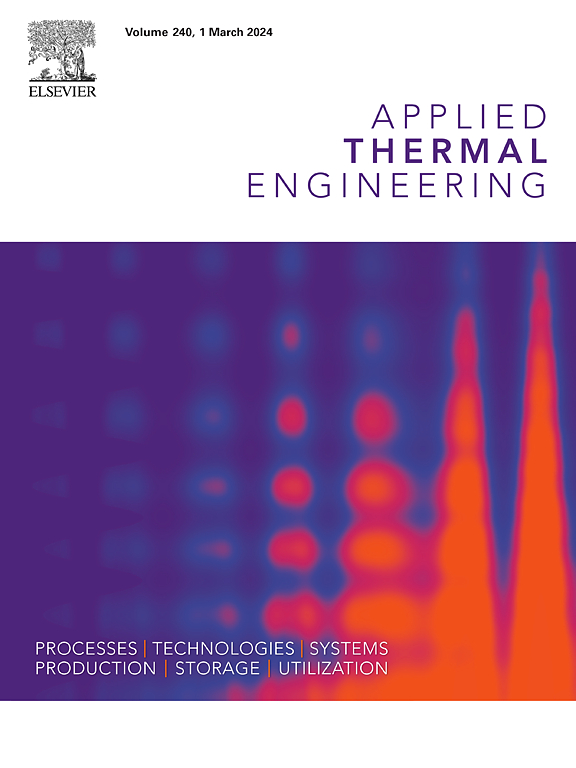Convective heat transfer parameters in the film cooling with thermal radiation
IF 6.1
2区 工程技术
Q2 ENERGY & FUELS
引用次数: 0
Abstract
Thermal radiation is a large contributor to the total heat transfer of combustion systems so that it cannot be neglected, with the improvement of gas temperature and infrared stealth requirements. This paper deeply investigated the convective parameters in film cooling with thermal radiation through theoretical analysis and numerical simulation. A method to obtain the convective driving temperature under radiation was proposed and demonstrated. Research found that the film cooling effectiveness with radiation should be expressed by the mixing temperature rather than the adiabatic wall temperature. Although heat transfer and mass transfer under radiation cannot be theoretically analogized due to the radiant source term in the energy equation, the concentration cooling effectiveness without and with radiation remains approximately the same. The numerical results indicate that although conjugate coupling plays a crucial role in determining convective and radiative heat fluxes, the coupling of radiation and convective parameters is very weak. Radiation has little influence on the film cooling effectiveness (η) and the convective heat transfer coefficient (hf). Convective parameters can be decoupled from radiation with negligible loss of accuracy. This allows the non-radiation convective parameters η and hf to be directly used for calculating the convective heat flux under radiation, with relative deviations of less than 5%.
热辐射薄膜冷却中的对流传热参数
热辐射对燃烧系统的总传热贡献很大,因此随着气体温度的提高和红外隐身要求的提高,热辐射的作用不容忽视。本文通过理论分析和数值模拟,深入研究了热辐射薄膜冷却中的对流参数。提出并论证了辐射下对流驱动温度的求取方法。研究发现,辐射下的薄膜冷却效果应该用混合温度而不是绝热壁温来表示。虽然由于能量方程中的辐射源项,辐射条件下的传热和传质无法从理论上进行类比,但无辐射和有辐射时的浓度冷却效果大致相同。数值结果表明,虽然共轭耦合在决定对流和辐射热通量方面起着关键作用,但辐射和对流参数的耦合非常弱。辐射对薄膜冷却效果(η)和对流传热系数(hf)的影响很小。对流参数可以与辐射解耦,精度损失可以忽略不计。这使得非辐射对流参数 η 和 hf 可以直接用于计算辐射下的对流热通量,相对偏差小于 5%。
本文章由计算机程序翻译,如有差异,请以英文原文为准。
求助全文
约1分钟内获得全文
求助全文
来源期刊

Applied Thermal Engineering
工程技术-工程:机械
CiteScore
11.30
自引率
15.60%
发文量
1474
审稿时长
57 days
期刊介绍:
Applied Thermal Engineering disseminates novel research related to the design, development and demonstration of components, devices, equipment, technologies and systems involving thermal processes for the production, storage, utilization and conservation of energy, with a focus on engineering application.
The journal publishes high-quality and high-impact Original Research Articles, Review Articles, Short Communications and Letters to the Editor on cutting-edge innovations in research, and recent advances or issues of interest to the thermal engineering community.
 求助内容:
求助内容: 应助结果提醒方式:
应助结果提醒方式:


